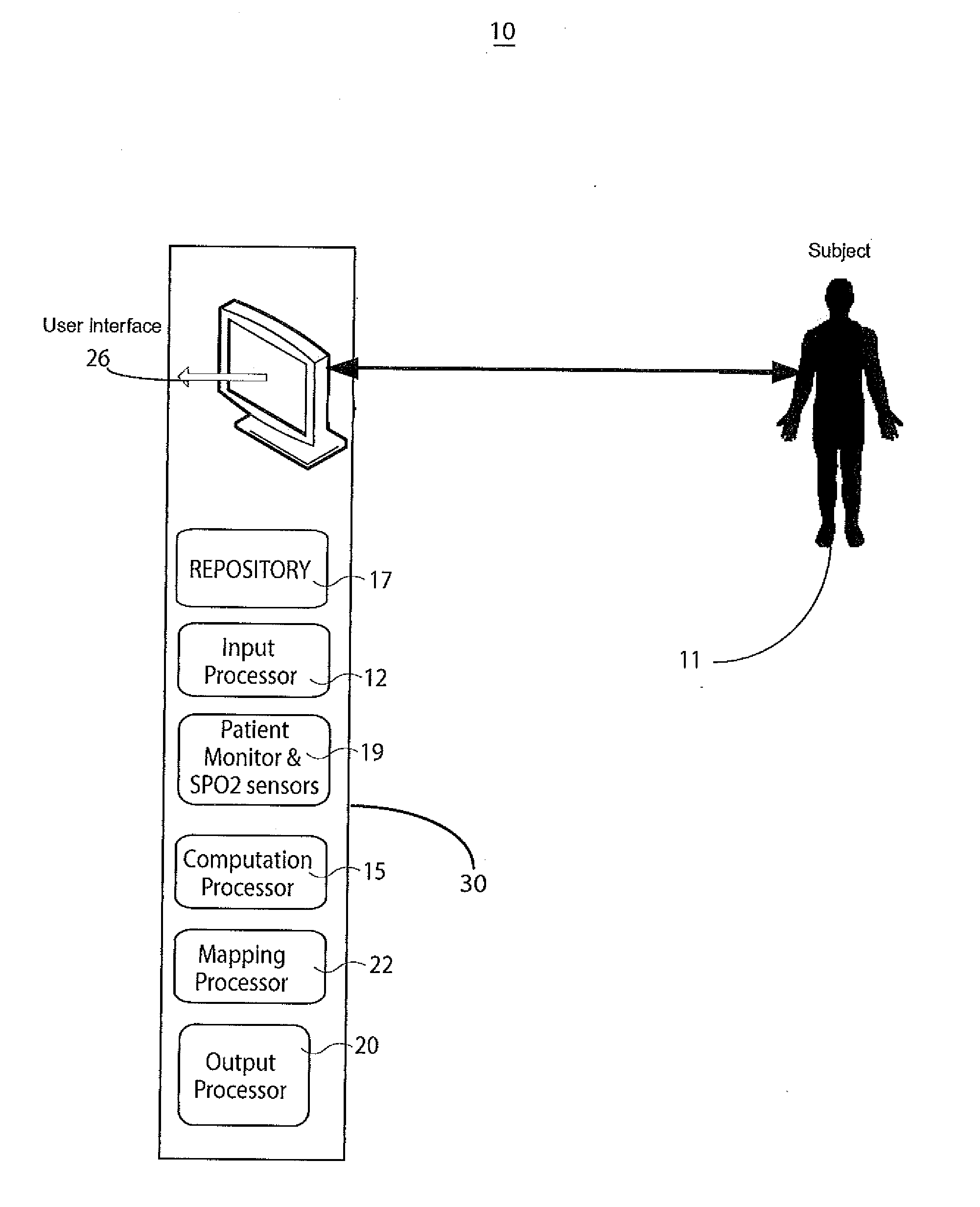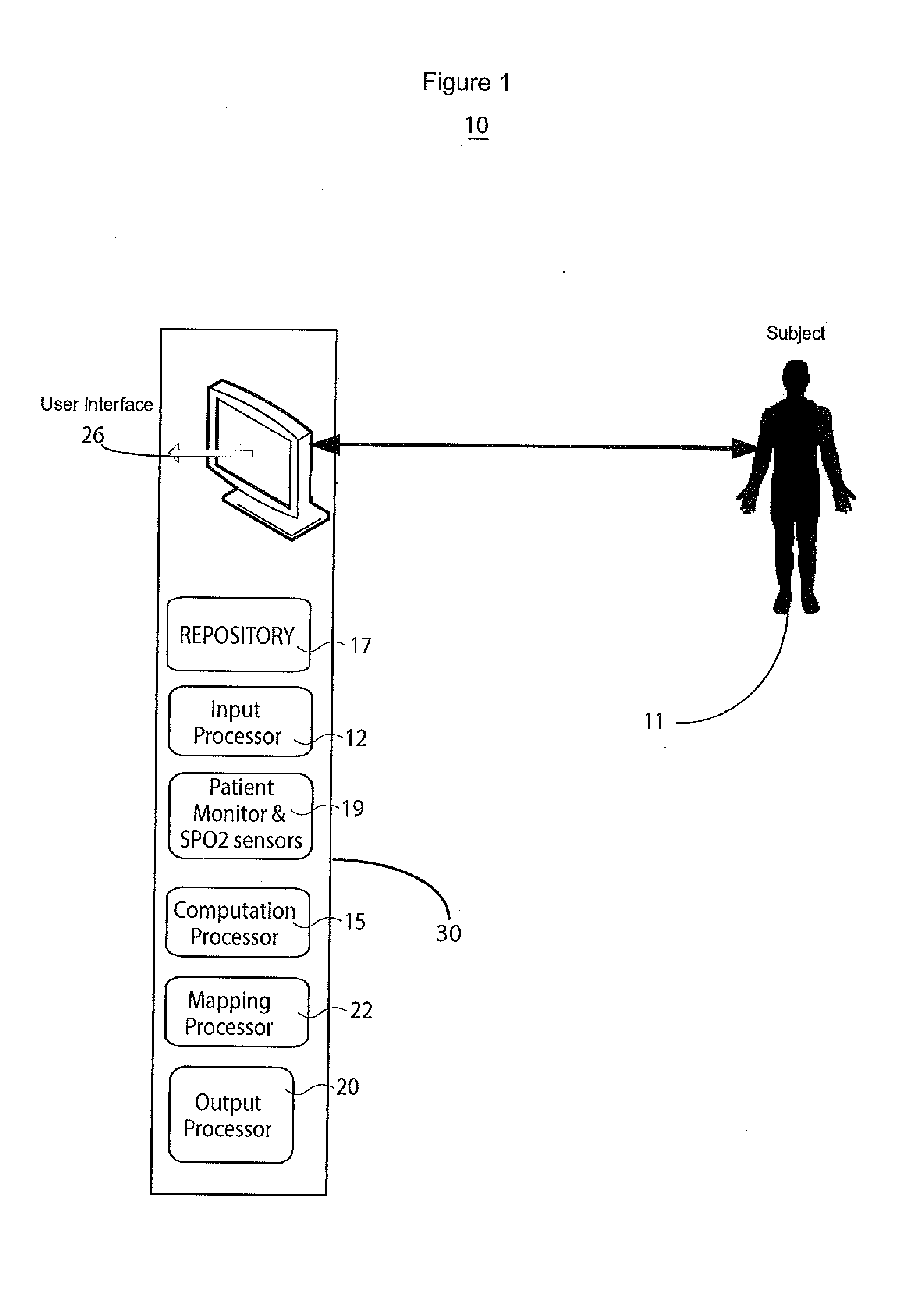System Non-invasive Cardiac Output Determination
a cardiac output and non-invasive technology, applied in the field of system for determining cardiac output and stroke volume, can solve the problems of increasing the complexity of clinical procedures, adding to the risk of patients, and different methods, and achieve the effect of reducing the volume of blood flow
- Summary
- Abstract
- Description
- Claims
- Application Information
AI Technical Summary
Benefits of technology
Problems solved by technology
Method used
Image
Examples
Embodiment Construction
[0013]A system determines cardiac output and stroke volume by using non-invasive oximetric signals, such as blood oxygen saturation (SPO2) data to quantitatively determine blood flow. The SPO2 data is utilized to analyze heart function and blood flow characteristics by building a bridging model between non-invasive blood oximetric signals in capillaries (such as in a finger tip) and cardiac pumps comprising heart chambers (particularly a left ventricle). Using nonlinear modeling based on SPO2 signal properties (such as Density, Variability, Variation), the system accurately determines cardiac output in the presence or absence of substantial noise. The system detects cardiac disorders, differentiates between cardiac arrhythmias, characterizes pathological severity, predicts life-threatening events, and facilitates evaluation of the effects of drug administration to a patient.
[0014]The system quantitatively determines CO and SV values by determining a blood oxygen content (SPO2) repre...
PUM
 Login to View More
Login to View More Abstract
Description
Claims
Application Information
 Login to View More
Login to View More - R&D
- Intellectual Property
- Life Sciences
- Materials
- Tech Scout
- Unparalleled Data Quality
- Higher Quality Content
- 60% Fewer Hallucinations
Browse by: Latest US Patents, China's latest patents, Technical Efficacy Thesaurus, Application Domain, Technology Topic, Popular Technical Reports.
© 2025 PatSnap. All rights reserved.Legal|Privacy policy|Modern Slavery Act Transparency Statement|Sitemap|About US| Contact US: help@patsnap.com



